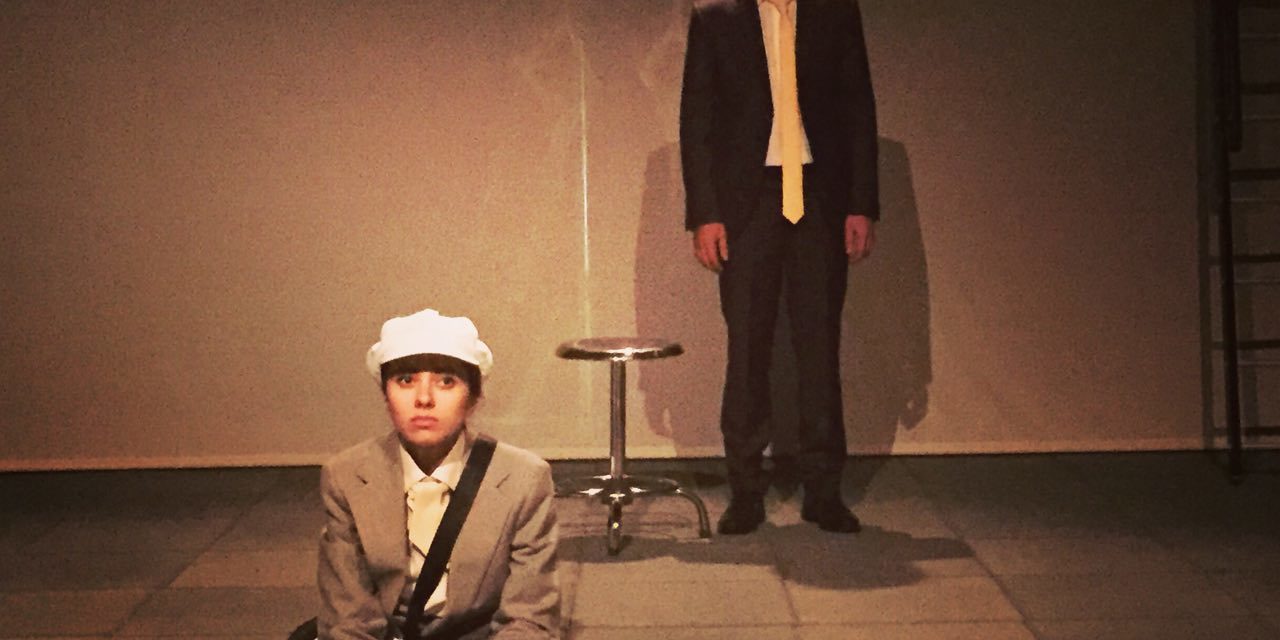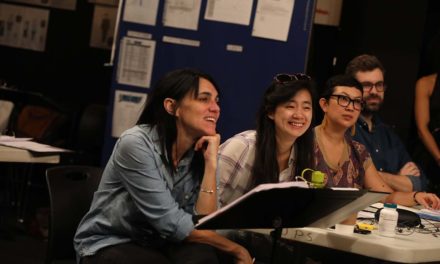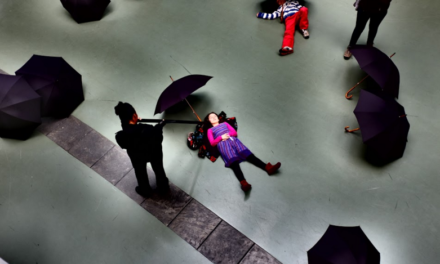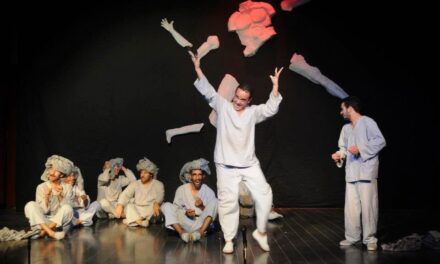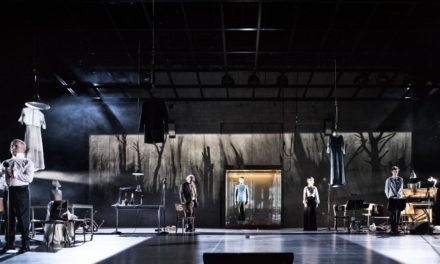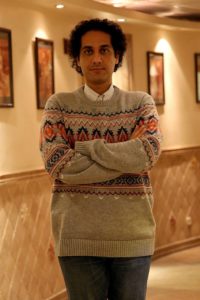
Amin Azimi is an Iranian theatre researcher, dramaturg, translator, and director. He studied dramatic literature and film studies and received his MA with honours from Tehran Art University. He has been teaching and supervising student dissertations in the theatre department at Azad Art and Architecture University and meanwhile has staged adaptations of plays written by Georges Perec, Peter Shaffer, and Arthur Miller. Amin has also been an award-winning theatre critic for more than a decade, and at the 2017 edition of the 35th Fadir International Theatre Festival (FITF) directed the theatre criticism working group. The group produced by far the largest body of criticism on the FITF theatrical productions. As a member of the Iranian Association of Theatre Critics, Journalists and Researchers, he has written actively in the field, and his works have been widely published in Iranian journals and media. His research interest is the history of playwriting and dramaturgy, the politics of theatre production, and postdramatic theatre and its critical perspectives.
I met Amin in Toronto in September 2016. In this interview, we talked about Iranian theatre, its identity, challenges and prospects. I asked him about the reasons theatre historiography and research have been less prosperous than international fertilizing and global touring. Despite the fact that thousands of artists and university graduates are actively creating and performing theatre at hundreds of venues, owned by the private sector or by the state, Iranian theatre is still staggering and remains unknown in the international academic and theatre community. Why is this the case?
Moosavi: Let’s begin from some general points, and hope the details transpire. How do you describe Iranian theatre? What key words or ideas best characterize or distinguish it?
Azimi: Iranian theatre is the result of a collection of endeavours throughout the last 160 years in Iran. The two key words that first come to my mind are the individualistic and even temporary qualities of these endeavours. In other words, a continuous movement or trend such as existed in Greece, France or Germany has rarely developed in Iranian theatre. In those countries, various organizations, public and governmental, contributed to the artistic achievements and made such movements feasible and robust, whereas in Iran we are facing a history that has constantly experienced discontinuity and rupture (enghetā’) due to political turmoil. That also explains why certain aspects or themes are repeated in theatre in Iran. These qualities of temporariness and of being individualistic have caused disconnection between theatrical endeavours. In other words, we have had eminent playwrights and directors in the last century, but their legacies have not been properly transferred to the next generations. The new generations have always started from scratch, and this is being repeated generation after generation.
Moreover, when there is no system to support such endeavours, there are only single stars (taksetāreh) who shine, struggle to work, and stop. Consequently, we have often seen that a masterpiece has been created and staged by a person and his group at one point of the recent history of theatre in Iran but that this has never continued. Therefore, Iranian theatre experience lacks the ability, first, to benefit from its potentials and moments of success and, second, to learn from its struggles and impasses. As a result, at this very moment that you and are talking about this theatre, we can’t find a robust and continuous chain that threads through the 160 years of theatre-making in Iran. Before and after the 1979 revolution, artists such as Arbi Ovanessian and Atila Pesyaani toured their performances in Europe. Ovanessian staged Orgast in Iran, which was a collaborative performance with Peter Brook. Recently, Amirreza Kouhestani also has been touring his works throughout Europe, but I believe these are only individual examples; their attempts never become mainstream or a movement in Iran.
Moosavi: So, based on what you’re saying, these artists, for instance, Amirreza Kouhestani, cannot be introduced as representative of the “theatre of Iran”?
Azimi: No, Kouhestani cannot be considered representative of Iranian theatre. He’s Iranian, he has roots in Iranian culture and tradition, but he is not representative of the “theatre of Iran.” Kouhestani’s theatre is not the theatre of Iran. If we are to talk about the “theatre of Iran,” we have to talk about a tradition and practice that has concrete aspects and attributes that we can discuss from various perspectives. This theatre lacks a primary database and sources; therefore, it cannot be discussed as “the theatre of Iran.” We have had lots of unfortunate talents in theatre; for instance Abbas Na’lbandian, who aptly used some aspects of Iranian-Islamic philosophy or oral poetic traditions in his theatre. But this knowledge has come to us merely through speculation and personal interpretations. There is no authoritative research on Na’lbandian’s artistic endeavours. Just like our theatre-making, the research and historiography of theatre has been very sporadic and isolated.
Moosavi: Thank you for raising this point. Since I started my graduate studies in Canada, I’ve noticed how little people, even scholars of theatre, know about Iranian dramatic arts and theatre. Why is this topic so underexplored? And why, as you say, have research practice and scholarship in Iranian theatre been done so scarcely, and in such an isolated and sporadic manner?
Azimi: What I explained above can also explain why a country with such a long history of dramatic performance and theatre-making, surprisingly, has no books on the history of this theatre-making. The reason is not that we haven’t had successful artists and distinct moments in our theatre history; nor is it because of sloth and inactivity. The reason is that the above-mentioned disconnection and rupture have made working for researchers and historians very difficult.
The historian and researcher have to explore a huge amount of documents and texts, often distorted and lost archives, and oral histories, and this task is specifically difficult in the case of theatre that has temporal and local specificity. They have to limit their historiographical tasks to subjective accounts, sporadic reports, writing fragments that have been subject to an array of socio-political circumstances in short-run political conditions. All this has conditioned the historiography and research about theatre in the recent political history and during different dynasties: Qājār, Pahlavi, and even in the Islamic Republic. Even in the current period, each change in the presidency can be considered a change in dynasty, because with each change in the presidency, most of the policies in the economy and management of theatre change as well.
A major obstacle in doing research about Iranian theatre is the language barrier. Being written and performed in Persian, Iranian theatre has had limited communication with the international theatre community; thus it is hardly known outside this peninsula of theatre-making and has remained heavily underexplored. The practice of writing and the tradition of research in the dramatic arts have been very limited in Iran. So, broadly speaking, Iranian theatre has not had a true chance to know itself, let alone the chance to develop skills to present itself. As I said, most of the research endeavours have been sporadic and isolated.
Moosavi: Thank you, Amin, in the next part I would like to know more about the major attributes of Iranianness in the Iranian theatre.
This post was written by the author in their personal capacity.The opinions expressed in this article are the author’s own and do not reflect the view of The Theatre Times, their staff or collaborators.
This post was written by Marjan Moosavi.
The views expressed here belong to the author and do not necessarily reflect our views and opinions.

